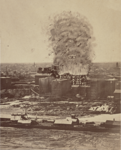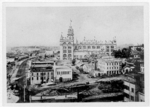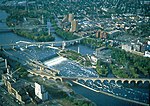Hennepin Island Hydroelectric Plant

The Hennepin Island Hydroelectric Plant is at St. Anthony Falls in Minneapolis, Minnesota. It has historically been an important part of St. Anthony Falls Hydroelectric Development. The plant is currently operated by Northern States Power/Xcel Energy. The facility stands on Hennepin Island near the Pillsbury "A" Mill at Saint Anthony Falls, the river's only waterfall, which powered the city's early sawmills, grist mills and other industry. There are five generating units.NSP/Xcel renewed its license which was authorized by the Federal Energy Regulatory Commission in March 2004. One condition of the license is the creation of a recreation area to show the evolution of St. Anthony Falls. A portion of the island overlooking the falls has been made into Water Power Park, allowing the closest possible approaches to the falls. In 2008, NSP/Xcel collaborated with the University of Minnesota's St. Anthony Falls Laboratory on a new Outdoor StreamLab which improves two existing flood bypass channels to study the site's ecology and hydrology.The plant is one of 85 contributing properties of the Saint Anthony Falls Historic District which is listed on the National Register of Historic Places. (See full list here.) Crown Hydro, LLC, has proposed another hydro plant for the falls, to be built on the opposite bank of the Mississippi next to the Stone Arch Bridge.
Excerpt from the Wikipedia article Hennepin Island Hydroelectric Plant (License: CC BY-SA 3.0, Authors, Images).Hennepin Island Hydroelectric Plant
Stone Arch Bridge, Minneapolis
Geographical coordinates (GPS) Address Nearby Places Show on map
Geographical coordinates (GPS)
| Latitude | Longitude |
|---|---|
| N 44.9824 ° | E -93.254155 ° |
Address
Hennepin Island Hydroelectric Plant
Stone Arch Bridge
55415 Minneapolis
Minnesota, United States
Open on Google Maps











